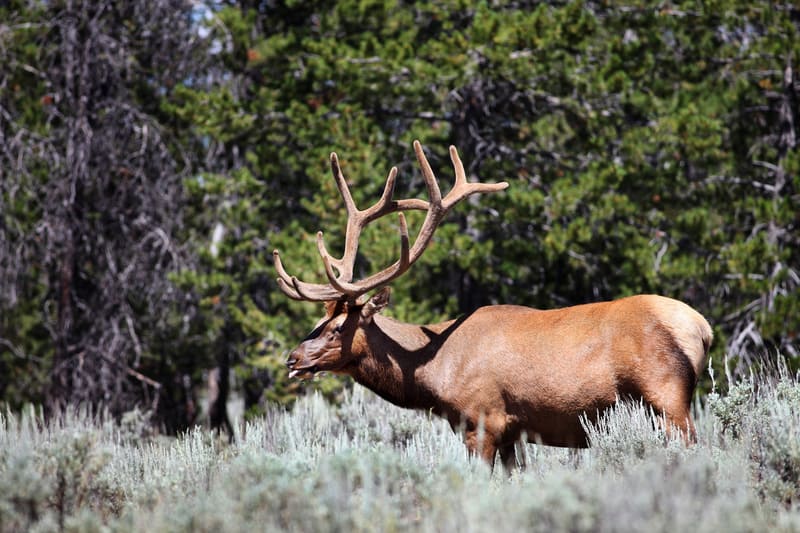Yes, there are elk in South Dakota. In fact, according to South Dakota Game Fish & Parks Commission, the elk population in the state is roughly 7,000 animals. Most of these reside in the Black Hills. However, there is also an undetermined number of them living in small herds out on the prairie.
This hasn’t always been the case. Although elk are native to South Dakota, they were completely extirpated from the state for a period of time. They were then reintroduced, initially to the Black hills.
South Dakota’s original elk
Before the arrival of European settlers to North America, American elk or wapiti were the most widely distributed cervid species on the continent. They ranged from the Atlantic Ocean in the east to the Pacific Ocean in the west. Additionally, they ranged from southern Canada in the north to northern Mexico in the south.
By the 1800s, a large part of the eastern portion of the continent was becoming densely settled. Additionally, Explorers were moving out onto the plains, and native Americans had procured firearms.
These three factors led to elk either being extirpated, or their numbers being greatly diminished in many parts of the United States. Unfortunately, South Dakota’s original elk population, which was of a sub-species called Manitoban elk (Cervus elaphus manitobensis) disappeared from the state by the late 1800s. In fact, the last elk in the Black Hills was killed in 1888. See
South Dakota’s other two cervid species, mule deer and whitetail deer, both nearly met similar fates to that of the elk. Unregulated hunting and market hunting drove both species to the brink of extirpation by the early twentieth century.
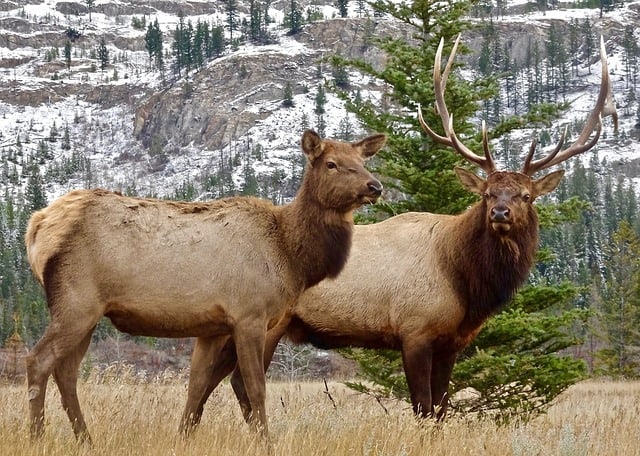
Reintroduction of elk to South Dakota
The 20th century saw South Dakota reintroduce some of the species that disappeared from the state in the 19th century. These animals include the bison, the bighorn sheep, the swift fox, the black-footed ferret, and the elk. Mountain goats became part of the Black Hills fauna in 1924. However, they are not native to South Dakota, and it happened by accident. Read about it here.
Getting back to elk, in 1911, the first shipment of Rocky Mountain elk, (Cervus canadensis nelsoni) from Yellowstone National Park arrived in the Black Hills. From there, subsequent translocations of elk from Yellowstone Park continued through 1920. At that point, the total Black Hills elk population numbered 200 animals.
First elk hunt
This initial elk population of 200 animals multiplied sufficiently for South Dakota to hold its first limited elk hunting season in 1952. From there, elk numbers remained stagnant until 1990, when the state transplanted 145 elk from Wind Cave National Park into the Black Hills National Forest.
From the mid-1990s through the mid-2000s, the Black Hills elk population exploded to an all-time high.
South Dakota elk hunting today
I copied the table below from the 2022 South Dakota Elk Status report, which is located here. As you can see, it illustrates, over a ten-year period, the number of applicants for an elk tag, the number of licenses sold, the total harvest, and the hunter’s success rate.
The drawing is only open to South Dakota residents.
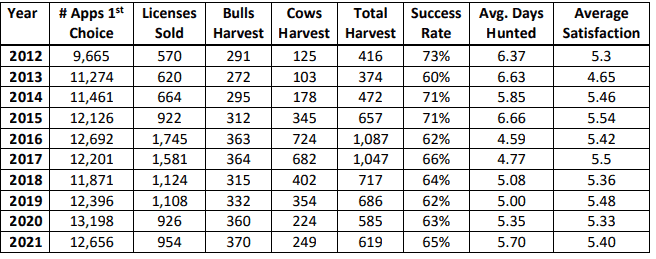
The SDGFPC offers more or fewer elk licenses depending on where their elk population count is in relation to their winter population objective.
The current winter population objective for the Black Hills, excluding Custer State Park and Wind Cave National Park, is 6,000 to 8,000 elk. At 7000, the current elk population estimate lies right in the middle of those 2 numbers.
The current elk winter population objective for Custer State Park is 500 to 600 animals.
The South Dakota Game, Fish, and Parks Commission adjusts their population objectives to fit the available resources on public land. They also address depredation issues with private landowners and consider input from the public.
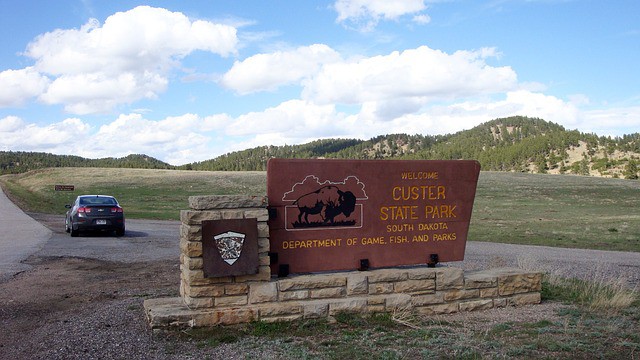
Custer State Park
Custer State Park is located in the Black Hills. Incidentally, it’s South Dakota’s oldest state park. Along with 1500 bison, the park is home to the mountain lion, bobcats, an occasional black bear, coyotes, river otters, prairie dogs, feral burros, pronghorns, bighorn sheep, mountain goats, mule deer, whitetail deer, and elk.
Custer State Park elk have an annual hunting season, as do the park’s buffalo, deer, and wild turkeys.
The park also holds an annual buffalo roundup. In which, they round up several hundred buffalo and sell them at auction to keep the herd’s population within the parameters that the range can support.
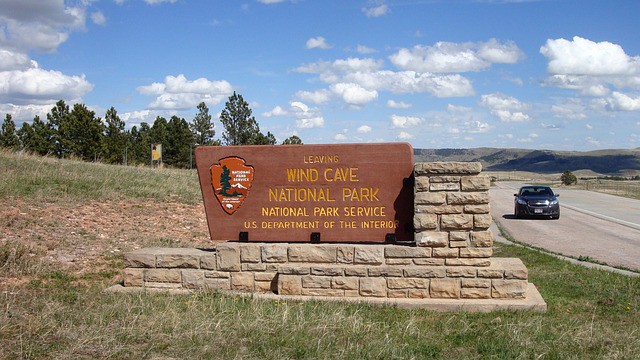
Wind Cave National Park
Wind Cave National Park is located on the southern edge of the Black Hills. It is home to deer, bison, pronghorn antelope, and elk, along with an assortment of small mammals, birds, and reptiles such as prairie rattlesnakes. There’s no hunting in Wind Cave National Park. This creates a problem in regulating its ungulate populations to fit the available feed. Additionally, there’s a concern that the dense elk population within the park will contribute to the promulgation of chronic wasting disease.
In the 2018 Wind Cave National Park elk management plan, the park hoped to use elk hunting on public lands and private lands outside the park to reduce and maintain the park’s wintertime elk population to a manageable level. Their population objective is 232 to 475 elk.
Wind Cave National Park hadn’t met its population objective in 2019. Consequently, in February 2020, it enlisted the help of volunteer sharpshooters to reduce its elk population.
They tested all of the culled elk for chronic wasting disease. Then subsequently, the National Park Service donated all of the animals that were CWD-free to Feeding South Dakota, an organization dedicated to eliminating hunger in the state.
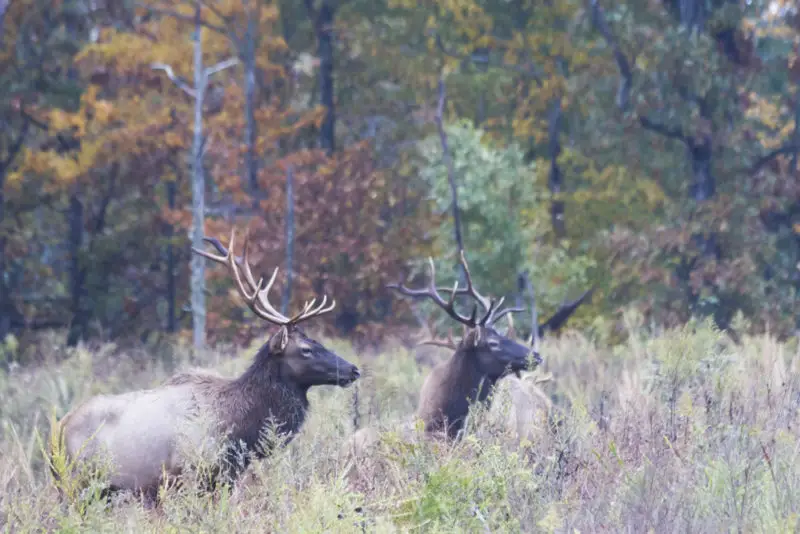
Elk in the Standing Rock Reservation
The Standing Rock Sioux Reservation lies on the border between Northern South Dakota and Southern North Dakota.
In 2010, a small elk herd was first noticed on the reservation. It’s believed that the herd is descended from a captive herd that the tribe once owned.
The herd now has around 100 cows and calves and 40 bull elk. They seem to mostly range in the Porcupine Hills, which are in Sioux County, North Dakota, just north of the border with South Dakota. Interestingly, the Standing Rock elk herd is becoming noted for producing trophy bulls. For example, in 2020, Jason Burtness went on the hunt of a lifetime when he harvested a monster non-typical bull on the Standing Rock reservation that measured 440 and 1/2 inches. See
In 2022, the Standing Rock Sioux tribe sold 13 “any elk” tags and 32 antlerless elk tags through a lottery and an auction to tribal members and non-tribal members.
In exchange for assistance in the management of the reservation elk herd, the state of North Dakota also sells some elk licenses within the unit. According to Casey Anderson, who is the wildlife division chief for North Dakota Game and Fish, the tags in the unit are a “once in a lifetime” draw.
In 2022, the state of North Dakota offered four “any elk” and 10 antlerless tags on the Standing Rock Reservation. See
Recent Posts
The only venomous snakes in Washington State are Northern Pacific Rattlesnakes. The Northern Pacific Rattlesnake (Crotalus oreganus oreganus) is a sub-species of the Western Rattlesnake. Anyone...
Skunks are not classified as true hibernators. But they go into a state of torpor when the weather gets cold. Skunks are light sleep hibernators, along with opossums, bears, and raccoons. ...

